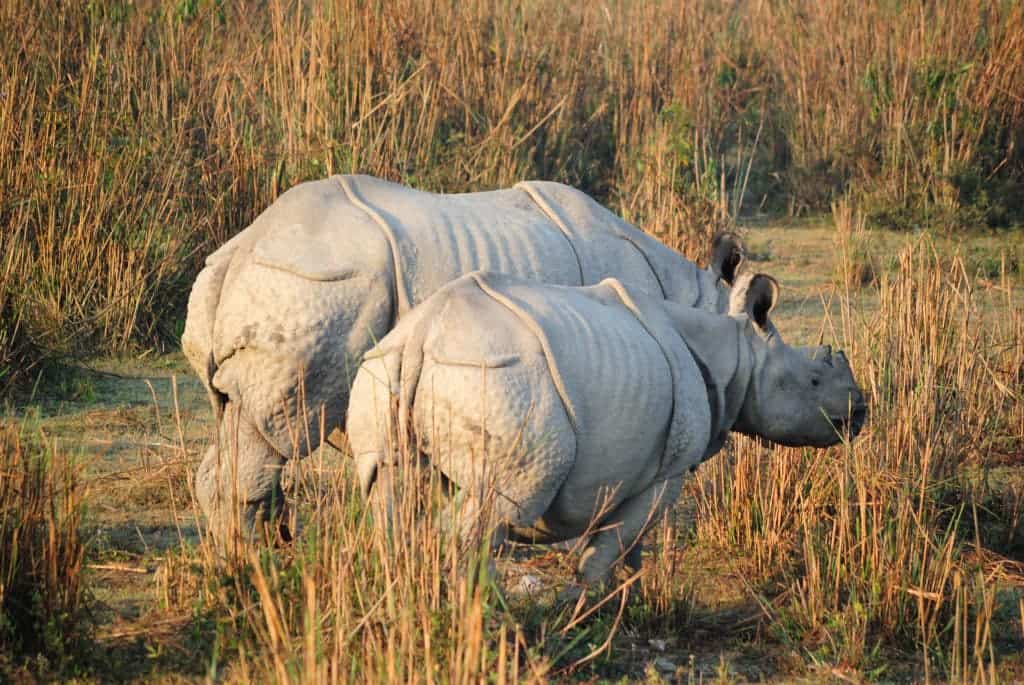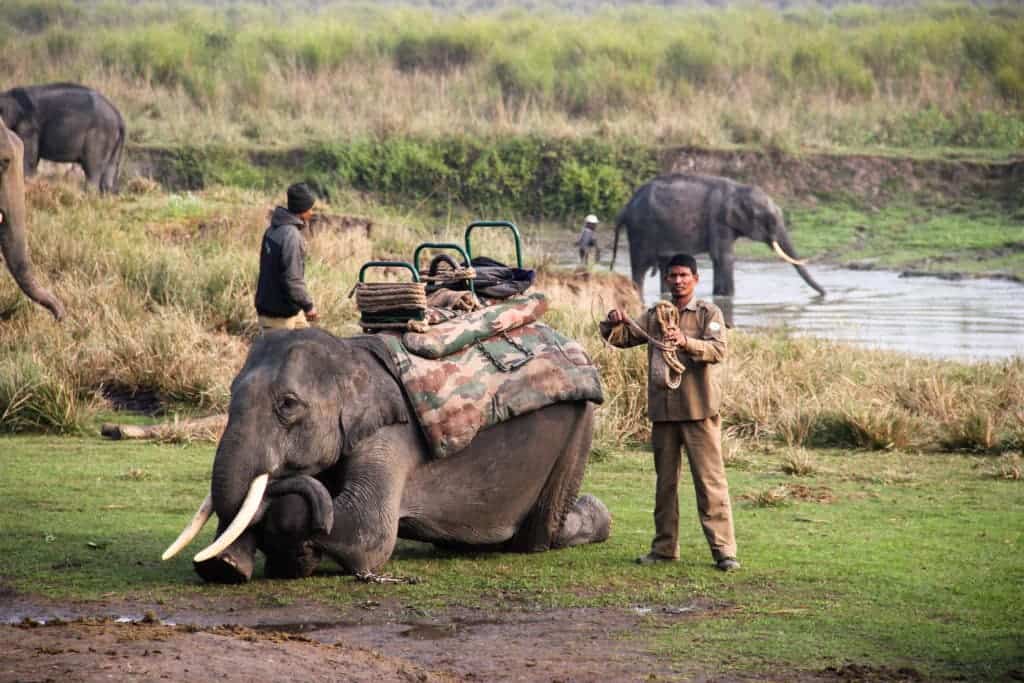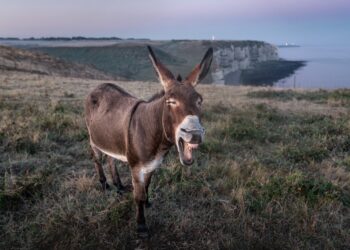Rangers are equipped with guns, and they use them on sight — sometimes without warning.

The Kaziranga National Park in Assam, India, is a remarkable story of conservation success. Despite the increasing black market demand for rhino ivory and despite total rhino numbers dropping significantly throughout the country, Kaziranga is doing great. The reason for that, as a BBC investigation has revealed, is the implementation of extreme measures.
Rangers have been militarized and shoot without hesitation. A BBC reporter recalls a conversation with a ranger:
“The instruction is whenever you see the poachers or hunters, we should start our guns and hunt them,” Avdesh explains without hesitation.
“You shoot them?” I [journalist] ask.
“Yah, yah. Fully ordered to shoot them. Whenever you see the poachers or any people during night-time we are ordered to shoot them.”
Killing poachers
Rhinos desperately need protection — that’s not even a discussion. Like many species of large herbivores, they’ve suffered from massive poaching, being hunted to extinction. The Western Black rhino is already extinct and things are looking bleak for all species of rhinos. To make things even worse, poachers (and the black market bringing the demand) have upped their game. Poachers nowadays use big guns, drones, and they’re ruthless.

They come in for the kill, and quite often, threaten humans as well as animals. This is also what the Indian government is saying. They’ve made the rangers almost a military force – wearing khakis, trained, they are allowed to carry guns and even to use drones to spot poachers approaching. Now, nothing’s really unusual up to here. Rangers should be properly equipped to deal with threats, and they should be able to defend themselves. The questionable thing is how often they should be pulling the trigger. At one point, they were killing 2 people every month, which seems like a lot. Add in the fact that they’re almost never held responsible for the killings, and you see how the problem emerges.
So, is this what it comes down to? We have to kill people to protect endangered animals? We all agree poachers must be punished harshly, but is it right for a ranger to be judge, jury, and executioner? The director of the park, Dr Satyendra Singh, says that that question is devoid of meaning because rangers are very disciplined and never shoot on sight.
“First we warn them – who are you? But if they resort to firing we have to kill them. First we try to arrest them, so that we get the information, what are the linkages, who are others in the gang?”
If he’s right, which at the very least, the BBC seems to question, all you would need are some checks and balances to make sure rangers act responsibly and don’t cause unnecessary killings — in other words, that they shoot only when threatened. Which brings us to an even bigger problem…
Collateral damage
There isn’t much in the way of checks and balances.
Like many parts of India, the Kaziranga National Park is densely populated. People have been living in the area for centuries, and sometimes they just wanted inside the park. Sometimes, they’re in the proximity of animals; and sometimes, they get shot.
Basically, the park has a “no one gets in” policy.
“Kill the unwanted,” should be the guiding principle for the guards, the head of the park says. He adds that environmental crimes are worse than murder. “They erode,” he said, “the very root of existence of all civilizations on this earth silently.”

He makes a strong case, especially considering that the park is the main touristic attractions in the area and one of the main income drivers. But while this does send a strong message to poachers, sometimes locals get caught in the crossfire — with disastrous consequences.
BBC tells the case of a local villager (Goanburah), reportedly caring for his cows, who was shot and killed after not realizing he ventured inside the park. They write:
“Goanburah had been looking after the family’s two cows. His father believes they strayed into the park and his son – who had severe learning difficulties – went in to try and find them. It is an easy mistake to make. There are no fences or signs marking the edge of the park, it just merges seamlessly into the surrounding countryside and fields. The park authorities say guards shot Goanburah inside the forest reserve when he did not respond to a warning.”
There’s no chance Goanburah was a poacher, especially as he was seriously disabled.
“He could barely do up his own trousers or his shoes,” his father says, “everyone knew him in the area because he was so disabled.”
A similar instance is told by a seven-year-old survivor. Akash Orang was shot in the leg. After a dozen surgeries, he can barely walk, and will likely never run again in his life.
“I was coming back from the shop. The forest guards were shouting, ‘Rhinoceros! Rhinoceros!'” He pauses. “Then they suddenly shot me.”
Accountability
At this point, this isn’t even about protecting the endangered species. When someone is shot (especially a disabled person and a seven-year-old), there should be an investigation and of course, some accountability. But there isn’t. The park says it’s not responsible for any investigations, and is generally unaware of who the alleged poachers are. Most of the time, the killed people are unidentified — which if you think about it, doesn’t make much sense. Your main interest is to protect the rhinos and identify the poacher network, so wouldn’t you want to know who the poachers are? Especially if people are living at the periphery of the park, you’d want to know who’s doing what.
Some other things also don’t add up with the way the Kaziranga administration is managing things. They want to expand the park and extend the protected area — which again, is a good thing. But due to their “no one gets in” policy, this means they will relocate several villages on the periphery, villagers who claim to be protecting the wildlife and providing environmental services.
Their response to the journalistic investigation was also highly questionable: they simply banned the BBC from the park for 5 years, for failing to submit the documentary to MoEFCC and Ministry of External Affairs for obligatory previewing “in order to remove any deviations, so as to achieve a balanced and accurate exposition of the theme”.
Since the crackdown commenced in 2013, rhino poaching has gone down drastically. You can’t argue with the results, at least so far. But is this a cost worth paying? I’d love to hear your opinions.





